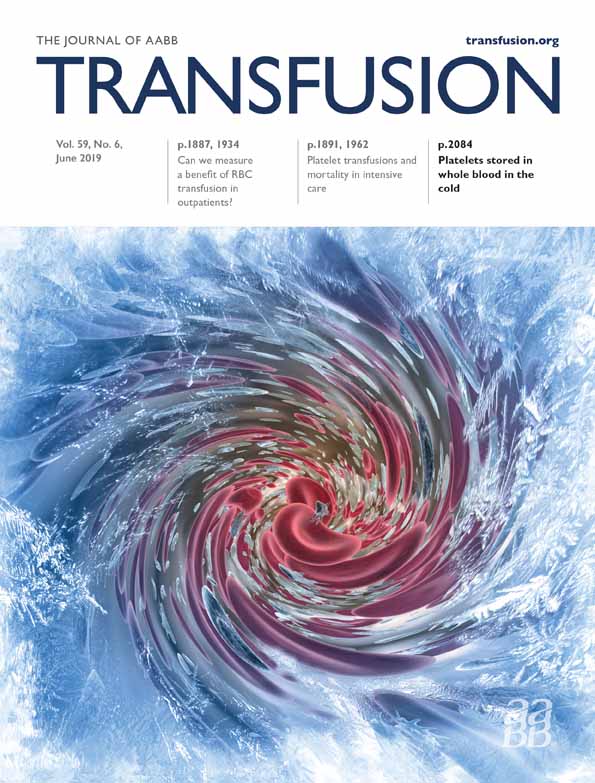Cryopreservation of UVC pathogen-inactivated platelets
Abstract
BACKGROUND
Extending the platelet (PLT) shelf life and enhancing product safety may be achieved by combining cryopreservation and pathogen inactivation (PI). Although studied individually, limited investigations into combining these treatments has been performed. The aim of this study was to investigate the effect of PI treating PLTs before cryopreservation on in vitro PLT quality and function.
STUDY DESIGN AND METHODS
ABO-matched buffy coat–derived PLTs in PLT additive solution (SSP+; Macopharma) were pooled and split to form matched pairs (n = 8). One unit remained untreated and the other was treated with the THERAFLEX UV-Platelets System (UVC; Macopharma). For cryopreservation, 5% to 6% dimethyl sulfoxide was added to the PLTs, and they were frozen at −80°C. After being thawed, untreated cryopreserved PLTs (CPPs) and UVC-treated CPPs (UVC-CPPs) were resuspended in plasma. In vitro quality was assessed immediately after thawing and after 24 hours of room temperature storage.
RESULTS
UVC-CPPs had lower in vitro recovery compared to CPPs. By flow cytometry, PLTs demonstrated a similar abundance of GPIX (CD42a), GPIIb (CD41a), and GPIbα (CD42b-HIP1), while the activation of GPIIb/IIIa (PAC-1) was increased in UVC-CPPs compared to CPPs. UVC-CPPs demonstrated greater phosphatidylserine exposure (annexin V) and microparticle shedding but similar P-selectin (CD62P) abundance compared to CPPs. UVC-CPPs displayed similar functionality to CPPs when assessed using aggregometry, thromboelastography, and thrombin generation.
CONCLUSIONS
This study demonstrates the feasibility of cryopreserving UVC-PI–treated PLT products. UVC-PI treatment may increase the susceptibility of PLTs to damage caused during cryopreservation, but this is more pronounced during postthaw storage at room temperature.
CONFLICT OF INTEREST
DCM and LJ received funding from Macopharma to conduct this research. The other authors have disclosed no conflicts of interest.




